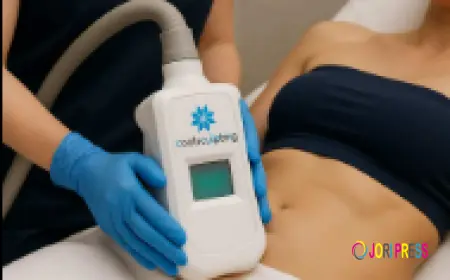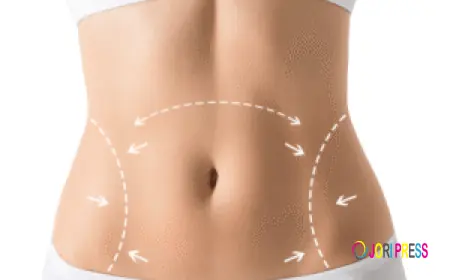Nicotine Pouches vs. Vaping/E-Cigarettes: Complete Comparison Guide
The nicotine pouch industry continues to grow rapidly across the United States, and 2026 is shaping up to be a transformative year. More adult consumers are embracing smoke-free lifestyles, choosing products that offer convenience, discretion, and cleaner use.

For those seeking harm reduction, understanding the healthiest and most practical nicotine alternative is crucial. Nicotine pouches and vaping (e-cigarettes) have surged as tobacco-free options for adult smokers and ex-smokers aiming to minimize harm. Whether your priority is health, social acceptability, or quitting success, this guide will help you determine which option best fits your lifestyle and health goals. Here’s a concise comparison of their differences, health impacts, convenience, and suitability for quitting smoking.
Quick Overview
|
Feature |
Nicotine Pouches |
Vaping/E-Cigarettes |
|
Delivery Method |
Placed between the gum and the lip; oral absorption |
Inhaled vapor from e-liquid |
|
Tobacco Content |
Tobacco-free |
Tobacco-free (most e-liquids) |
|
Discreetness |
Odorless, invisible, easy to use anywhere |
Produces visible vapor, odor present |
|
Setup & Maintenance |
No device, ready-to-use, disposable |
Requires device, charging, and refills |
|
Nicotine Strength |
Lower, steady release (1-11mg/pouch) |
Wider range, rapid delivery (0-50mg/ml+) |
|
Initial Cost |
Low; buy per can |
High; requires device plus e-liquids |
|
Ongoing Cost |
Buy cans regularly |
E-liquids last longer, but devices, parts |
|
Harm Reduction |
No lung exposure, lower carcinogen risk |
No combustion, but vaporizes chemicals |
|
Social Acceptance |
Can use discreetly anywhere |
Usage is restricted in many public places |
How They Work
· Nicotine Pouches: Small, discreet pouches placed between the gum and lip, releasing nicotine steadily via the oral mucosa. This method of delivery results in a more stable absorption rate, with the half-life of nicotine typically being 1 to 2 hours, which can lower the potential for addictive spikes often seen in quicker delivery methods. No inhalation or vapor is involved, and no maintenance is required.
· Vaping/E-Cigarettes: Electronic devices heat a nicotine-containing liquid into an aerosol that is inhaled. Offers customizable flavors and nicotine doses, but requires purchasing, refilling, and maintaining a device.
Convenience & Discreetness
Nicotine pouches are odorless, discreet, equipment-free, and usable almost anywhere. Vapes emit visible vapor and scents, making them less practical in no-smoking areas or when privacy is needed.
Nicotine Delivery and Satisfaction
· Vaping provides an immediate nicotine effect, which may be more satisfying for individuals seeking to replicate the hand-to-mouth routine associated with smoking.
· Nicotine pouches deliver slower but more stable absorption, which many users find less variable and easier to manage for controlling cravings.
Nicotine pouches typically deliver 1 to 11 mg of nicotine per use, whereas vaping devices can reach concentrations up to 50 mg per milliliter.
Health Risks: What Does the Evidence Show?
· Respiratory Risks: Vaping introduces aerosolized chemicals into the lungs, which can cause inflammation, bronchitis, and in severe cases, conditions such as EVALI (e-cigarette or vaping use-associated lung injury). Nicotine pouches bypass lung exposure entirely, reducing respiratory risk.
· Nicotine Addiction: Both products are highly addictive due to their nicotine content. Nicotine pouches may cause gum or oral irritation, while vaping can result in throat irritation and potentially more rapid addiction due to faster nicotine delivery.
· Long-Term Health: Neither method is without risk. Vaping exposes users to additional chemicals, heavy metals, and flavoring agents, with largely unknown long-term consequences. Nicotine pouches reduce exposure to these substances but may still affect cardiovascular health.
For harm reduction, particularly among individuals with respiratory concerns, nicotine pouches may present a safer alternative. However, complete abstinence remains the healthiest option.
Effectiveness for Quitting Smoking
· Vaping: According to some health authorities, vaping is approximately twice as effective as traditional nicotine replacement therapies (NRTs) in supporting smoking cessation. The hand-to-mouth aspect of vaping replicates the behavioral component of smoking, which many users consider essential during cessation.
· Pouches: Nicotine pouches are gaining popularity, particularly among individuals seeking to avoid inhalation. Their steady nicotine delivery may better support gradual reduction without reinforcing the behavioral cues associated with inhaling vapor.
For guidance on using nicotine pouches for smoking cessation, refer to "How to Quit Smoking with Nicotine Pouches: A Step-by-Step Plan."
User Experience and Lifestyle Fit
· Travel and Social Settings: Nicotine pouches are more travel-friendly and generally acceptable in smoke- and vape-free environments. Vaping is frequently prohibited in public spaces due to the production of visible vapor.
· Sensation: Vaping produces a "throat hit" and visible vapor clouds, which are preferred by individuals who miss the ritualistic aspects of smoking. Nicotine pouches offer a subtle, hands-free alternative that is better suited to discretion.
· Maintenance: Nicotine pouches require minimal maintenance, as they do not involve charging, cleaning, or coil replacement.
· Customization: Vaping devices provide greater control over nicotine strength, flavor, and device functionality, which may appeal to individuals interested in technology or flavor variety.
Cost Considerations
· Pouches: Nicotine pouches generally have lower initial costs, although total expenses depend on individual usage patterns.
· Vapes: Vaping devices and accessories require a higher initial investment, but e-liquids may last longer, potentially reducing ongoing costs.
Health Warnings
Both options pose significant health risks, especially for young people or those with no previous nicotine use. Nicotine is addictive, and misuse can have serious health consequences. For some, these products are a stepping stone to eventually quitting all forms of nicotine. For in-depth safety discussions and regulatory updates, visit "Comparing Risks: Pouches vs. Cigarettes".
Conclusion: Which Should You Choose?
· Nicotine pouches are best suited for individuals who prioritize discretion, oral health, respiratory safety, and ease of use. They are particularly appropriate for those aiming to reduce nicotine dependence in a controlled manner.
· Vaping or e-cigarettes are preferable for individuals who value the hand-to-mouth ritual, flavor variety, and rapid nicotine delivery as alternatives to smoking.
Regardless of the chosen method, gradual reduction and eventual cessation of nicotine use provide the most significant health benefits. For individualized guidance, consultation with a healthcare professional is recommended before making a decision.
What's Your Reaction?
 Like
0
Like
0
 Dislike
0
Dislike
0
 Love
0
Love
0
 Funny
0
Funny
0
 Angry
0
Angry
0
 Sad
0
Sad
0
 Wow
0
Wow
0


















































